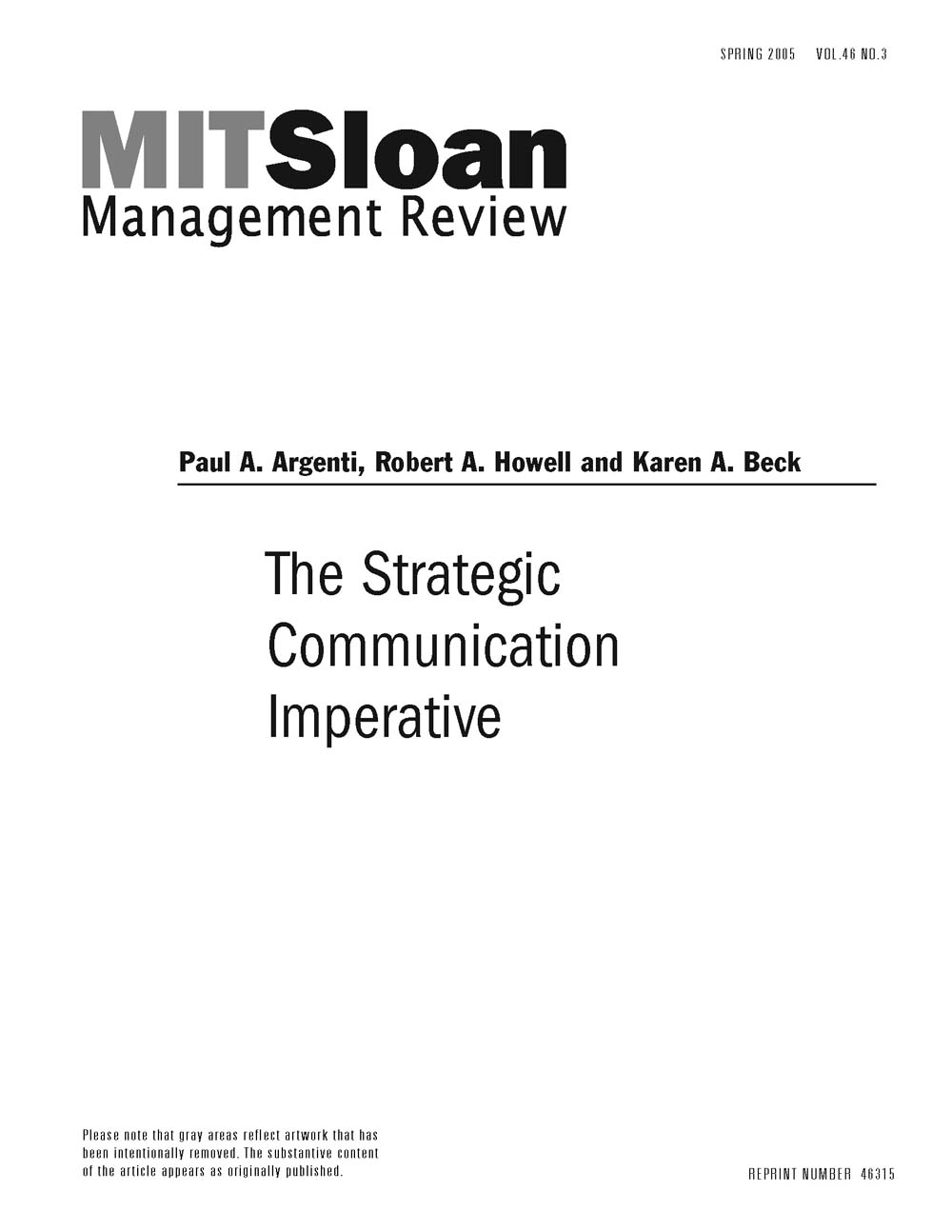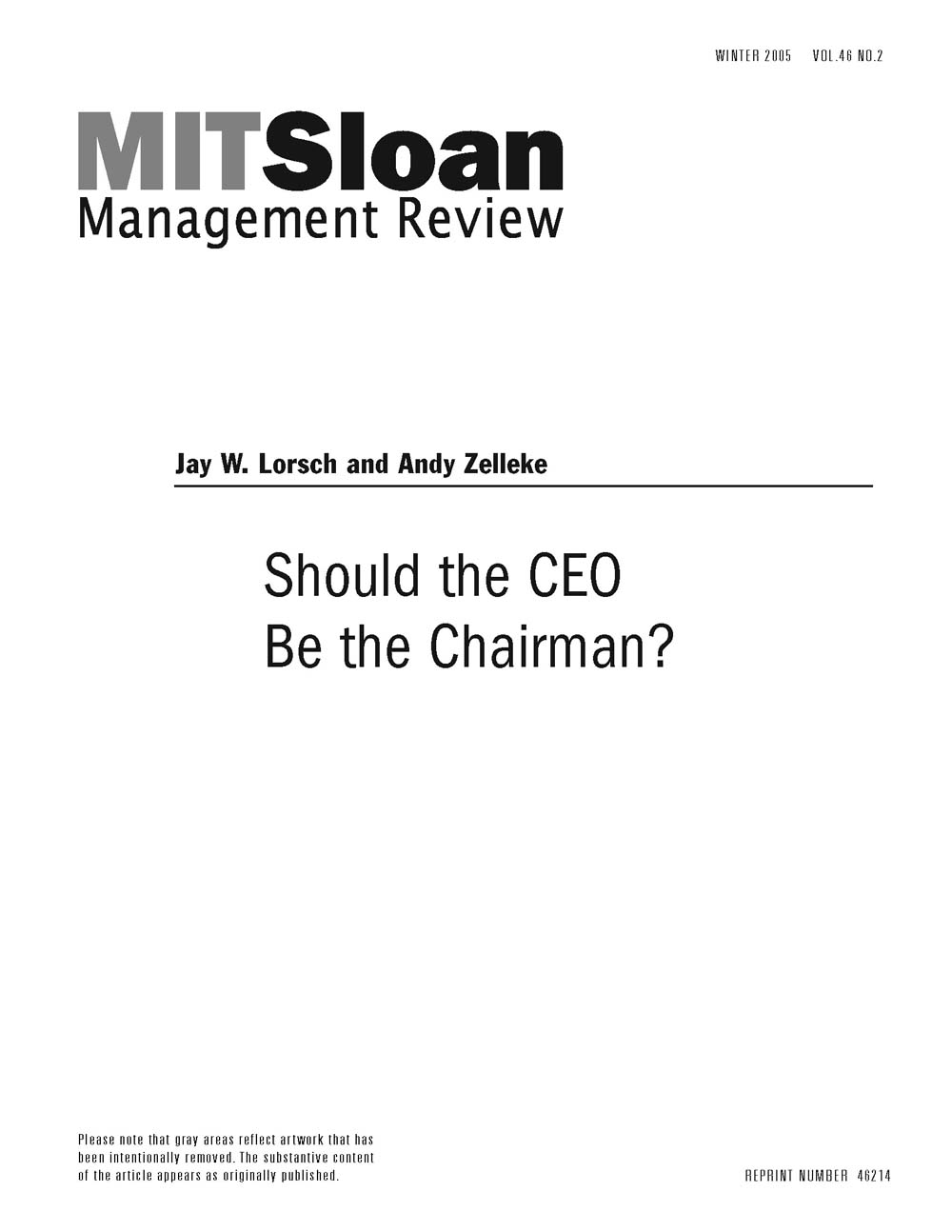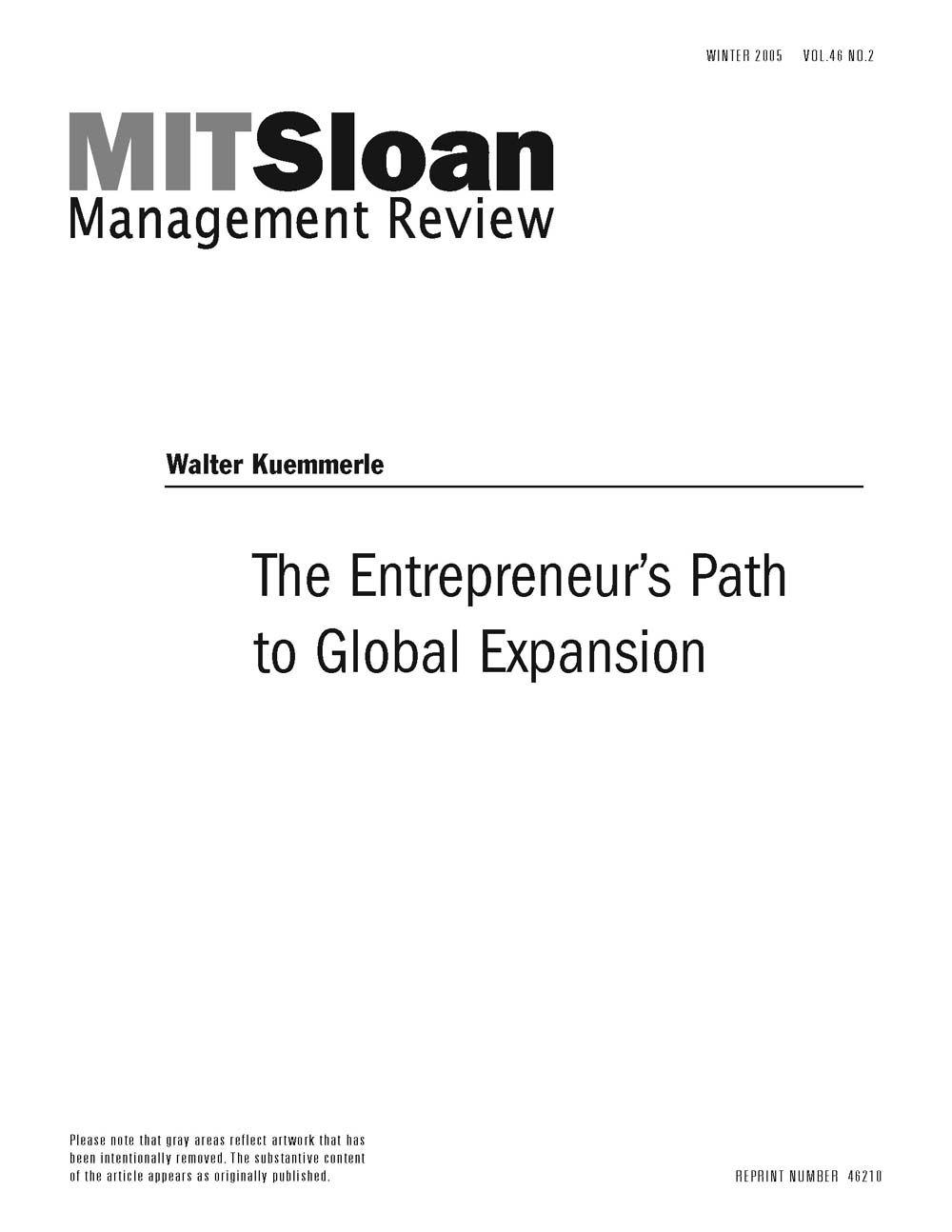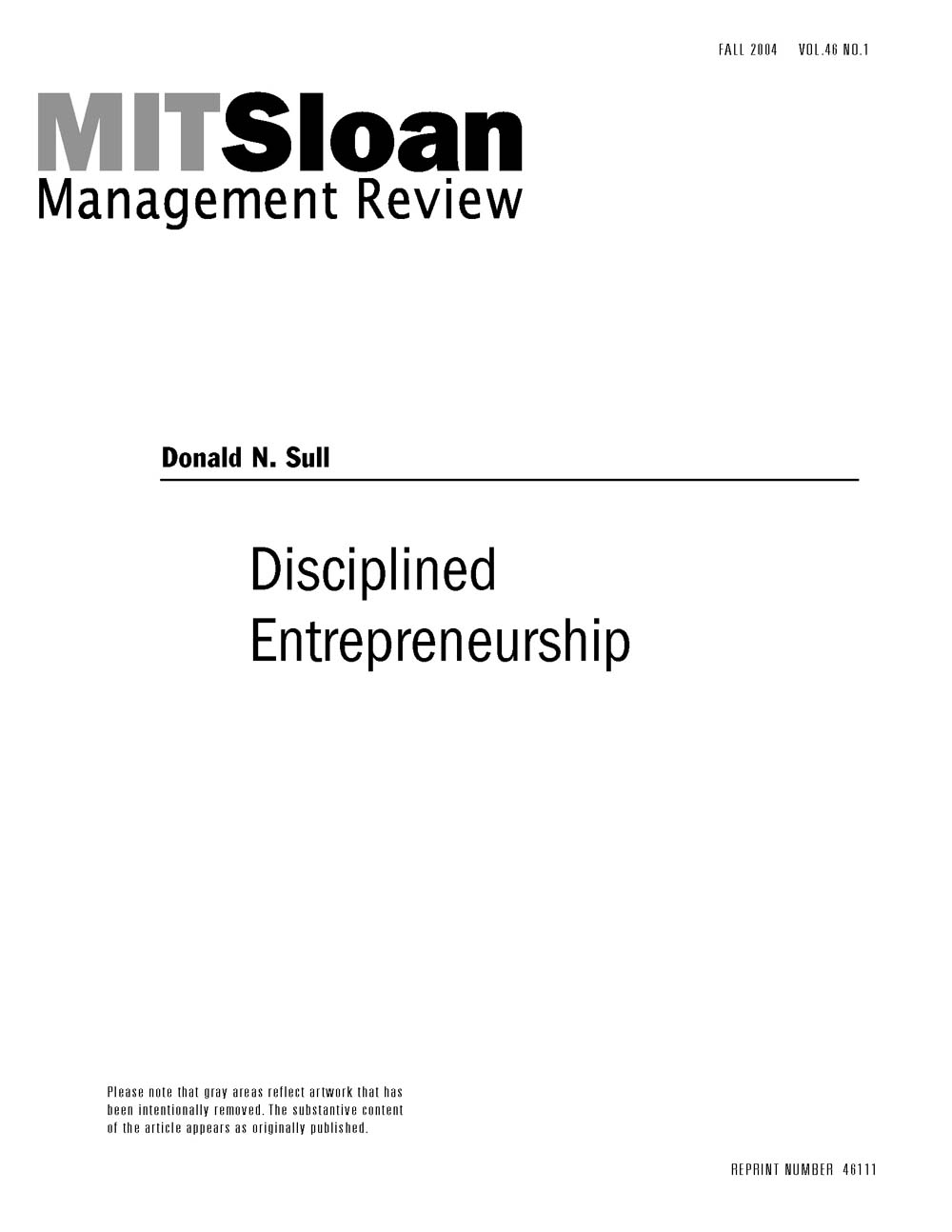The importance of properly identifying the strategies, and anticipating the actions, of rivals.
Strategy P. 14
Page 33 of 46
-
How Acquisitions Can Revitalize Companies
Corporate executives typically have strategic explanations for their acquisitions: that buying the company in question makes sense geographically or that the products are synergistic. However, if you inquire two years later how the company has benefited, managers tend to focus on the "softer" factors with comments like, "They made us rethink our decision-making processes," or "They introduced us to a new approach to product development," or simply "They shook up our culture." To understand this apparent contradiction, the author analyzes the acquisitions and performance of a number of large, successful companies. Several of the companies included in the research suffered from rigidity. However, the author found that companies were able to use acquisitions to restore a sense of vitality to their businesses and unleash a subsequent surge in performance. The acquired companies often stimulated the acquiring companies to develop new perspectives and different ways of doing things at critical times. Acquisitions kept their organizations fresh and vital. Even if the enterprises did not pursue acquisitions for this reason, the process of buying businesses and deciding how to integrate them into their corporate structures enabled acquirers to renew themselves before their products and operating methods became outdated.
-
Avoiding Lemons in M&A Deals
How can companies resolve the two issues of M&As: the acquiring company's struggle to value the target's resources and the need for the parties to agree on a price?
-
The Strategic Communication Imperative
The authors contend that a number of factors, both external and internal, are increasingly necessitating a strategic approach to corporate communications. Yet, despite regulatory imperatives, organizational complexities and a growing need for companies to increase their credibility with their various constituencies, many companies still take a tactical, short-term approach to communication that is not only nonstrategic but may, in fact, be inconsistent with the corporate strategy or even impede it. The authors conducted more than 50 interviews with CEOs, CFOs and heads of corporate communications and investor relations at companies that represent the state of the art in corporate communications (Dell, FedEx and PepsiCo), companies that have faced and survived major crises (Cendant, Knight Trading and Textron), and some that are great corporate communicators but not usually recognized for their efforts (Cognex, Infosys, Jet Blue, the New York Times Co. and Playboy Enterprises). They also included a pharmaceutical company (GlaxoSmithKline), given the formidable communications issues in that industry. On the basis of that research, the authors offer best practice lessons and a framework to enable executives to think carefully about their organization’s objectives for each specific communication, determine which constituencies are critical to meeting that objective and understand what kinds of messages to deliver through which channel.
-
Are Professional Board Directors the Answer?
Board directors for U.S. corporations have been facing an increasing number of demands. At the same time, the pool of available candidates to fill such positions has been shrinking. Given these realities, companies looking to fill board openings should consider a new type of director: well-established professionals who devote all of their work, time and energies to corporate board activities. Professional board directors might come from a variety of backgrounds, but they will likely be drawn from one of three categories. The first group is senior managers in midcareer. These executives have considerable experience (20-plus years) but prefer using their knowledge and experience in a less operational and more consultative manner. The second group is executives 10 years senior to those in the first category. (Thus, they would typically have 30-plus years of experience.) Tired of senior-management stresses yet having sufficient financial resources, individuals in this group might view board positions as a prelude to retirement. The third category comprises former senior partners in national accounting firms with 30-plus years of experience in audit and internal control functions. Although their career experiences will not be as broad as that of many other senior executives, individuals in this category would be ideal to chair the corporate audit or compensation committees. The author contends that candidates from the three categories -- in addition to another group made up of retired senior managers -- could greatly alleviate the growing shortage of qualified board directors.
-
Should the CEO Be the Chairman?
Recent corporate scandals have made many U.S. boards question the wisdom of combining the chairman and CEO positions. But a knee-jerk decision to adopt the British model of separating the two top jobs without understanding the model's complexities is hardly the answer. Corporate governance across the Atlantic has its own characteristic problems. For example, although a separate chairman makes the board more independent of the CEO, the arrangement can lead to confusion regarding the company leadership. And a poor relationship between the chairman and CEO can easily lead to conflicts and power struggles. U.S. boards need independent leadership, but achieving such leadership by splitting the two positions is not necessarily a clear improvement over the U.S. model. Instead, the authors argue, for most large U.S. companies, the addition of a competent lead director or presiding director will likely strike the right balance between effective governance and leadership.
-
The Changing Face of Corporate Boards
Corporate boards in the United States have recently been on the hot seat. Stimulated by high-profile scandals, investor dissatisfaction with board performance and questions about the level of executive compensation, regulators have introduced significant reforms in the rules that govern boards. But will such reforms actually contribute to the effectiveness of boards? A real danger exists that the mandated changes not only will fail to enhance how companies are governed but also could possibly lead to a number of negative unintended consequences. To investigate such issues, the authors conducted a study that compared the board practices and effectiveness of Fortune 1000 companies in 1998 versus 2003. They looked specifically at three areas: board leadership, the conditions governing board membership, and the performance evaluations of boards, individual board members and CEOs. The results have helped to determine which practices in those three areas are actually related to overall board performance.
-
The Entrepreneur's Path to Global Expansion
Most startup companies today consider overseas expansion from their inception. Yet, says the author, entrepreneurs and their managers often underestimate the cost of expansion and lack a clear conceptual framework for it. On the basis of studying 50 entrepreneurial ventures in more than 20 countries, he concludes that such ventures follow a variety of different expansion paths. The most successful are those that best manage the constant tensions between resources and opportunities, each of which run the gamut from purely local to worldwide. He offers a framework that defines the choices a venture has at its inception and throughout its life, then shows how the framework can be used to assess and direct a venture and mitigate developing tensions by anticipating a variety of strategic, financial, organizational and regulatory factors. This is illustrated with case examples of a software company that took a balanced or “diagonal” path (the most common), an air-freight delivery service that progressed from pursuing local opportunities with local resources to pursuing cross-border opportunities with local resources, and a consumer-loan provider that began by pursuing a local opportunity with local resources, then added cross-border resources. Other examples include London-based fashion e-tailer Boo.com, Boston-based Internet Securities Inc. and the Georgian Glass and Mineral Water Co. in the Republic of Georgia.
-
Competing With Gray Markets
In recent years, gray markets -- in which a firm's products are sold or resold through unauthorized dealers -- have become ubiquitous. They exist for tangible products (lumber and electronic components) and intangibles (broadcast signals, IPOs); for massive goods (automobiles and heavy construction equipment) and for light, easily shipped products (watches and cosmetics); for the mundane (health and beauty aids) and the life saving (prescription drugs). Gray markets aren't going away soon. Although they ebb and flow as exchange rates, price differentials and supply conditions change, surveys confirm the increasing incidence and scope of gray markets. In many situations, their sales outstrip authorized sales. An inability to compete with gray markets can wreak havoc on firms and industries. Unfortunately, because it is so hard to get data on gray-market activity and what firms are doing to deal with it, there is little published guidance to help managers. The sale of legitimate products in the wrong place or in the wrong channel poses unique problems to companies, but there are unique solutions that can successfully manage them. Describing several examples that show the scope and complexity of the gray-market problem, the authors explain how managers can apply a framework based on sensing, speed and severity in order to manage it. They also point out scenarios in which gray markets actually help and should be tolerated.
-
Disciplined Entrepreneurship
Although the pursuit of opportunity promises outsized rewards to entrepreneurs and established enterprises, it also entails great uncertainty. The critical task of entrepreneurship lies in effectively managing the uncertainty inherent in trying something new. Some entrepreneurs foolishly try to ignore uncertainty; others go to the opposite extreme of attempting to avoid it altogether. Rather than ignore uncertainty or attempt to avoid it in the na_ve belief that every contingency can be anticipated, entrepreneurs should instead manage uncertainty by taking a disciplined approach. Over the past five years, the author conducted systematic research into how entrepreneurs manage the inevitable risks while pursuing opportunities. A synthesis of the research revealed that discipline -- and its byproduct, the successful management of uncertainty -- comes through the adoption of an iterative experimentation model. In this three-step process, an entrepreneur first formulates a working hypothesis about an opportunity, then assembles the resources to test the hypothesis, and finally designs and runs real-world experiments. Depending on the results of a round of experimentation, the entrepreneur may revise the hypothesis and run another experiment, harvest the value created through a sale, or abandon the hypothesis and pull the plug. The model provides insights into some of the most daunting questions entrepreneurs face -- including how to screen an opportunity, how much money to raise, when to make key hires and how to use limited resources most efficiently.












